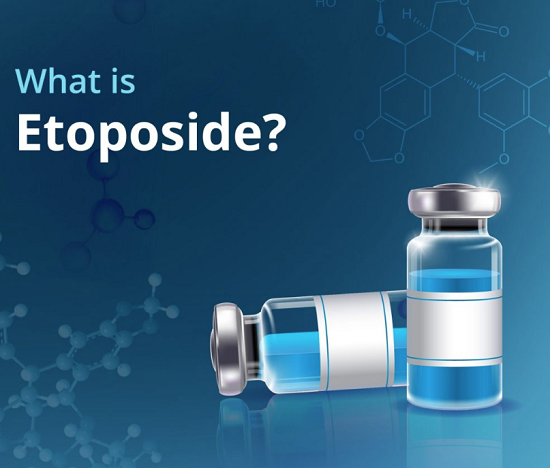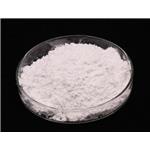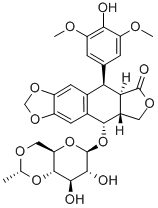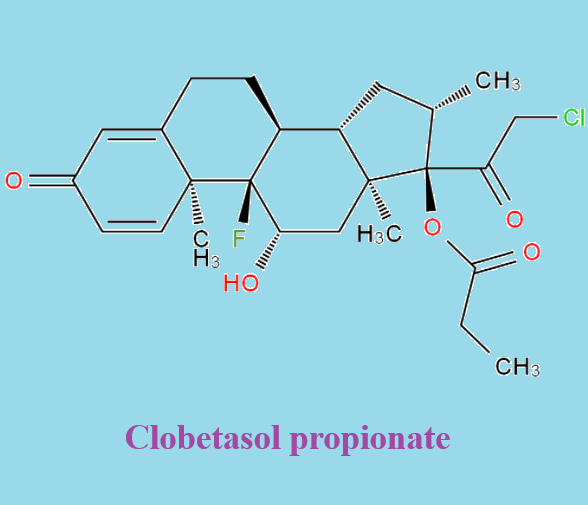Etoposide: an anticancer drug
Introduction
Etoposide is a derivative of podophyllotoxin, a toxin found in the roots and rhizomes of Podophyllum peltatum Linnaeus (the American mayapple) and Podophyllum emodi Wallich, which grows in Himalayan regions. In the early 1800s, Podophyllum plant roots and podophyllin (extract from the Podophyllum plant rhizomes) were used to treat emetic, cathartic, scrofula, syphilis, and cough. It was also used to treat condylomata acuminata, a proliferative skin disease (genital warts). However, because of side effects due to nonspecific toxicity, further use of podophyllin was prohibited.

History
Given the antimitotic properties of podophyllin, investigators at Sandoz Pharmaceuticals synthesized a series of podophyllotoxin derivatives in search of safe and effective antineoplastic drugs in the 1950s. A series of aldehyde condensation products of the non-purified root of the Indian Podophyllum plant resulted in synthesising the glucoside derivative of 4′-demethylepipodophyllotoxin, which had antitumor activity. Later, their extensive work led to 60 compounds, two showing increased antineoplastic activity – etoposide (developed in 1966) and teniposide (synthesized in 1967). Etoposide and teniposide were selected for clinical trials in 1967 and 1971. Clinical investigations showed that they had a significant antitumor activity with low toxicity in acute myeloid leukemia, Hodgkin's lymphoma, non-Hodgkin's lymphoma, lung cancer (both small cell and non-small cell), gastric cancer, breast cancer, and ovarian cancer. In 1978, Bristol-Myers Squibb was licensed to develop etoposide and teniposide. Based on demonstrated anticancer efficacy, the FDA approved etoposide (VePesid) in 1983 for testicular cancer. Oral etoposide is generally well tolerated, with myelosuppression, alopecia, and mucositis as the main adverse effects.
Used as an anticancer drug
Etoposide is a fundamental and essential part of combination chemotherapies for treating numerous cancers, such as lung cancer, lymphoma, and leukemia. Like most antineoplastic drugs, etoposide treatment cancer has limited single-agent activity. It is mainly associated with cisplatin, carboplatin, and cyclophosphamide in combination with chemotherapy. Currently, 4 to 6 cycles of etoposide and cisplatin combination is the standard therapy commonly used for most small cell lung cancer in the clinic, with a 50%−80% objective response rate. In combination with several drugs (lomustine, methotrexate, and prednisone), etoposide is also proposed to be first-line therapy in patients with non-Hodgkin's lymphoma with no significant cardiotoxicity. Similarly, in Hodgkin's disease, etoposide is a first-line chemotherapeutic agent in combination with other chemotherapeutic agents (vincristine, chloramphenicol, and prednisolone), was positive (77% response rate). In addition, etoposide was reported to be active against gestational trophoblastic disease. Etoposide was used for breast cancer treatment; the single-agent trial in untreated patients showed a response rate of approximately 15% in untreated patients. Oral etoposide has been investigated in many clinical trials for the treatment of ovarian cancer response rates have varied in different studies (20.4% to about 30%), and it seems that the activity of this drug depends to a large extent on the degree of prior treatment.
Mechanism of action
Its mechanism of action is to cause single-strand and double-strand breaks in DNA through interaction with DNA topoisomerase II, inducing arrest in the G2 phase of the cell cycle. This activity is mediated by forming a stable complex with DNA and topoisomerase II. In addition, etoposide binds to tubulin and inhibits microtubular assembly. Although etoposide is highly lipophilic, it does not readily pass the blood-brain barrier due to its large size; concentration in the cerebrospinal fluid after an intravenous bolus is less than 10 per cent of plasma. Etoposide can be administered orally, by bolus intravenous, or by continuous intravenous infusion over several days.
References:
[1] WENCHAO ZHANG . Etoposide, an anticancer drug involved in therapy-related secondary leukemia: Enzymes at play[J]. Translational Oncology, 2021, 14 10. DOI:10.1016/j.tranon.2021.101169.[2] SARWAT JAMIL. Etoposide induces cell death via mitochondrial-dependent actions of p53.[J]. Cancer Cell International, 2015, 15. DOI:10.1186/s12935-015-0231-z.
You may like
Related articles And Qustion
Lastest Price from Etoposide manufacturers

US $0.00/Kg/Bag2025-04-21
- CAS:
- 33419-42-0
- Min. Order:
- 10g
- Purity:
- 99%min
- Supply Ability:
- 10kg

US $0.00/kg2025-04-02
- CAS:
- 33419-42-0
- Min. Order:
- 1kg
- Purity:
- 99%
- Supply Ability:
- 20tons



